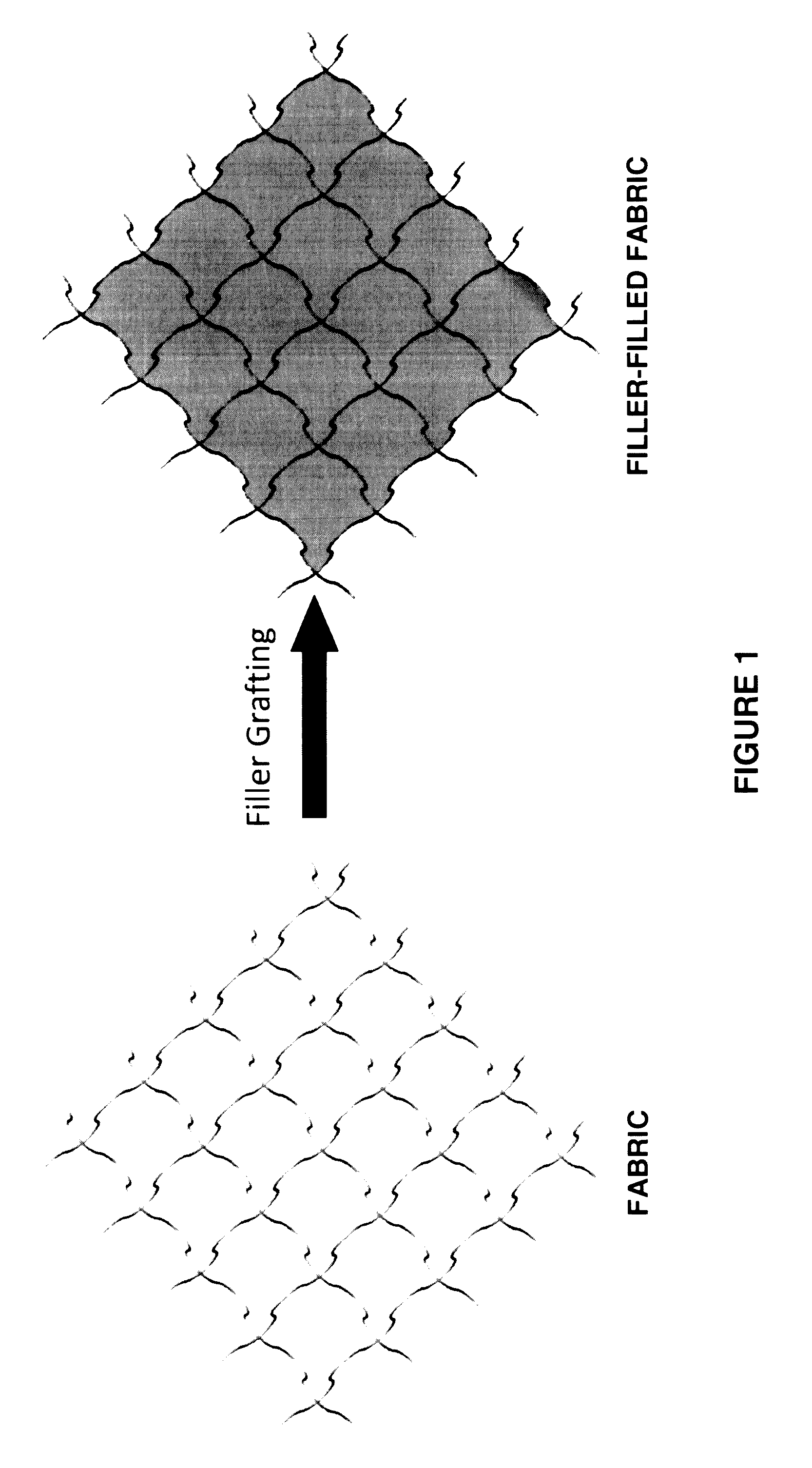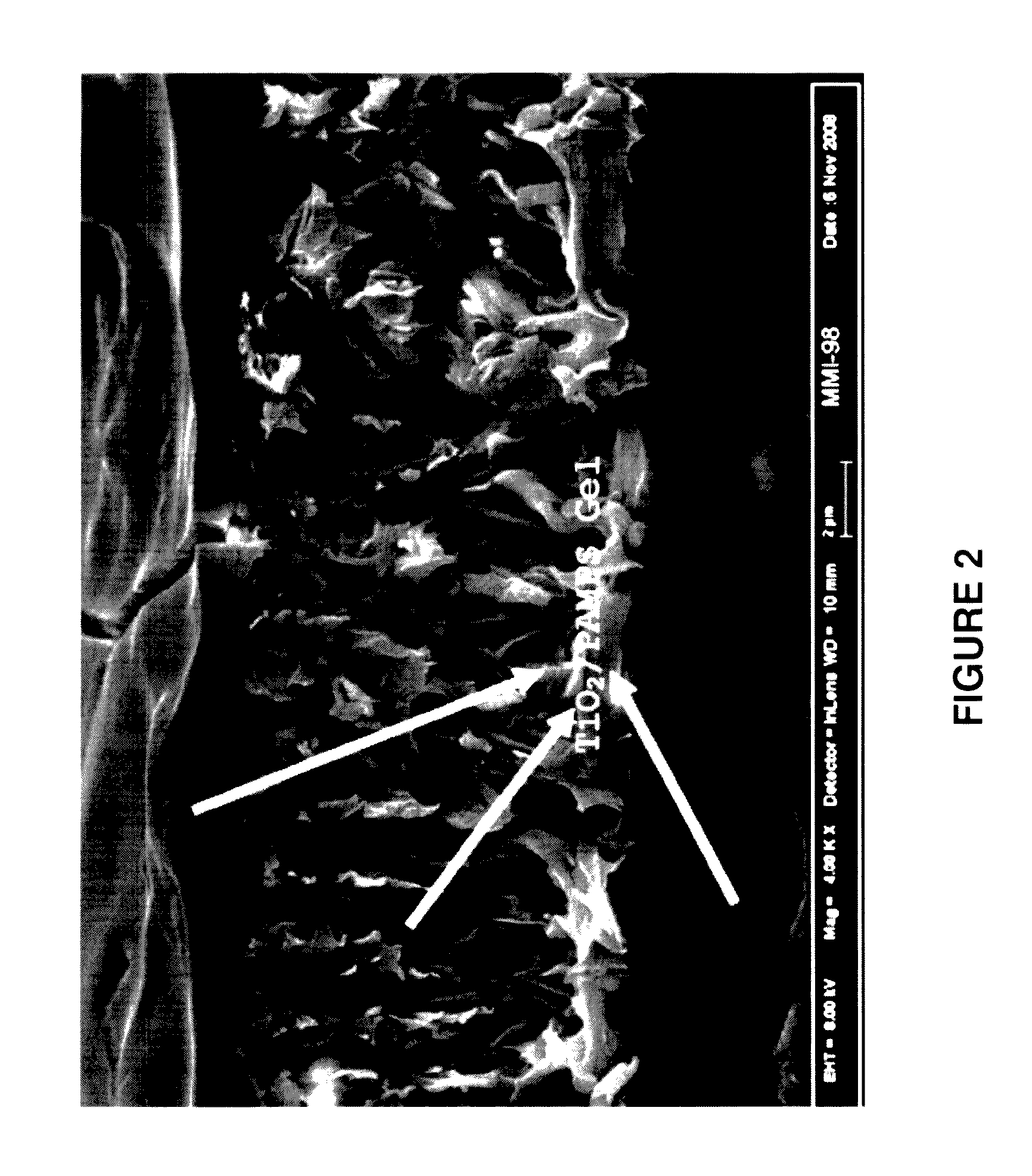Breathable chemical, biological, radiation, and/or nuclear protection fabric or material
a chemical, biological, radiation and/or nuclear protection fabric or material technology, applied in nuclear engineering, nuclear elements, synthetic resin layered products, etc., can solve the problems of growing threat, cbwa's are destructive weapons, and can terrorize, incapacitate, harm or kill, so as to limit the effect of radiation sources
- Summary
- Abstract
- Description
- Claims
- Application Information
AI Technical Summary
Benefits of technology
Problems solved by technology
Method used
Image
Examples
example 1
[0083]The POM catalyst, H5PV2Mo10O40 mixed polyacrylic acid gel was used as filler in a fabric. The yellow color of the fabric gel was changed to green when mixed with 2-chloroethyl ethyl sulfide (CEES), a simulant for the chemical agent HD indicating the self-decontaminating nature of the fabric.
example 2
[0084]In a preferred embodiment of the present invention, the first step in the filler filling or grafting is activation of the fabric surface. A scalable chemical process was developed as a method for surface activation before polyelectrolyte-gel grafting. Oxygen-plasma treatment of the fabric can also be used for surface activation. Chemicals for the surface activation of polymers were selected depending on the type of the fabric. Preferred chemicals are provided below in Table 1.
[0085]
TABLE 1Surface Activation Chemical Treatments for Polymer MembranesPolymer MembraneActivation ChemicalsPCTE3 wt % KMnO4PETEH2O2, (NH4)2S2O8, NaNO2PITEK2Cr2O7 / H2SO4
example 3
[0086]2-Acrylamido-2-methyl-1-propanesulfonic acid (AMPS) monomer was used as a precursor for the hydrophilic filling polymer gel and N,N′-methylenebisacrylamide (BisA) monomer was used as the cross-linking agent. Titania nanotubes were used as inorganic fillers along with AMPS / BisA gel (referred as ‘PAMPS’). The concentration of monomer AMPS was varied from 10-30 wt % in order to obtain the best surface grafting of the gel on the polymer-membrane pores. The rate of polyelectrolyte-gel formation was increased with the amount of AMPS. After initial optimization of the concentration, 30 wt % of AMPS and 2 wt % of cross-linker BisA and 5 wt % titania nanotubes were used in the graft polymerization reactions, which seem to yield a stable gel in a reproducible manner.
[0087]The graft polymerization of acrylic acid along with titania nanotubes onto oxidized membranes can also be performed in Pyrex reaction containers under an inert atmosphere.
PUM
| Property | Measurement | Unit |
|---|---|---|
| Diameter | aaaaa | aaaaa |
| Diameter | aaaaa | aaaaa |
| Acoustic impedance | aaaaa | aaaaa |
Abstract
Description
Claims
Application Information
 Login to View More
Login to View More - R&D
- Intellectual Property
- Life Sciences
- Materials
- Tech Scout
- Unparalleled Data Quality
- Higher Quality Content
- 60% Fewer Hallucinations
Browse by: Latest US Patents, China's latest patents, Technical Efficacy Thesaurus, Application Domain, Technology Topic, Popular Technical Reports.
© 2025 PatSnap. All rights reserved.Legal|Privacy policy|Modern Slavery Act Transparency Statement|Sitemap|About US| Contact US: help@patsnap.com



